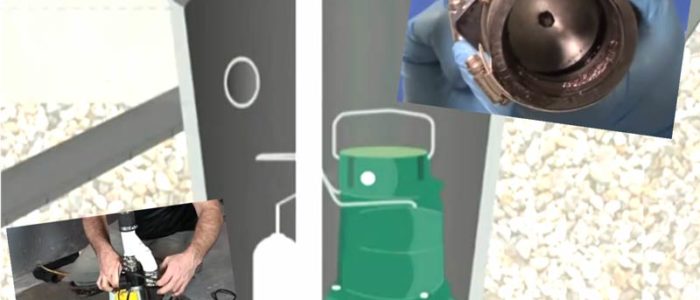Check and Service Your Sump Pump For Visible and Hidden Faults
Article Chapters
Servicing Your Sump Pump Before Autumn as Important as Checking the Boiler
Householders are often advised to ensure their boiler and central heating system are routinely checked before autumn, when the nights start drawing in. The same advice is also urged before the arrival of winter rainfall for property owners with a sump pump. A service check may be needed even before. London and parts of south east England have, in recent years, experienced record high temperatures followed by flash flooding with a month’s worth of rain falling in just a couple of hours.
New occupiers of a house with a basement area may only discover that is has a cellar pump after moving in. There could be clear visual evidence to suggest a lack of regular servicing but awareness of an internal fault may only arise with the first heavy rainfall and the pump fails to start or operate properly.
Installing and maintaining a fully working sump pump is now more important than ever if a property is built on a floodplain, near a riverbank or located in a coastal region. Latest UK climate projections show a general trend toward milder but wetter winters.
Months with extreme rainfall, which occurred in February 2020, are expected to be more frequent during the 21st century, according to the Met Office. Their latest estimates put a 34 per cent probability of record-breaking rainfall “in at least one month, and one region of the UK during winter”. Records show that four of the top ten wettest winters occurred since 2007 and seven since 1990.
Visual inspection of sump pump in basement or cellar
The first action you should take if you are a homeowner with a sump pump installed in the basement or cellar is a visual inspection. In some cases, the unit may no longer be connected to the electricity supply or perhaps a fuse has blown. However, the first tell tale sign of a potential problem is an incorrectly sized sump pit.
The requisite size sump pump needs to be fit perfectly within a sump pit, neither too large nor too small. Water collected in an undersized pit will be quickly emptied by the pump, which will switch off and then on again when more water quickly fills the pit, and the previous cycle is repeated. Repeated switching on and off can quickly impact the pump’s motor and operating system, and increase the likelihood of overheating and breakdown.
Conversely, an oversized sump pit is likely to also be too deep. A sump pit which reaches well below floor level will collect an excessive volume of water, forcing the pump to work longer and harder to remove. As with an undersized pit, the pump’s motor and operating system can soon overheat and cease to function.
However, the first sight to greet the eyes can be unpleasant. The floor area in and around the sump station may be covered in a deposit of foul-smelling, brick-red coloured gunge. The sump pump system will have been compromised by microscopic organisms feeding on the iron and/or manganese present in the water. The resulting build up of a thick, slime rust residue will completely clog a perimeter drainage system.
Most common sump pump faults are not immediately visible
However, one of the most common sump pump faults is not immediately visible – a failed float switch. The component should rise along with the sump pit water level, automatically turning the pump on when reaching a fixed height. As the water level in the sump pit drops, the switch also descends, and the system turns off.
Unfortunately, the float switch can become trapped in either the on or off position, as a result of vibrations causing the pump to ‘wander’ around in the sump pit. As the pump reaches the edge of the pit, the switch can become stuck against the pit lining and no longer able to turn automatically on or off. If stuck in the on position, the system will run nonstop until eventually burning out. If left in the off position, the system is disabled from functioning.
Another internal pump problem could be a jammed impeller no longer able to force water through to the discharge pipe, often the result of dirt, mud and other debris in the sump pit entering through the protective screen.
Regular service maintenance by summer’s end will ensure a thorough inspection, repair and cleaning of a sump pump, its parts and surrounding sump pit. All ready and able to take on and continue dealing with rainfall events, whenever they occur, from autumn through to spring.

